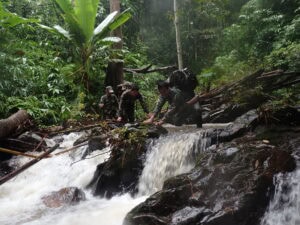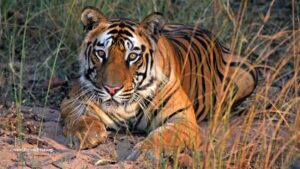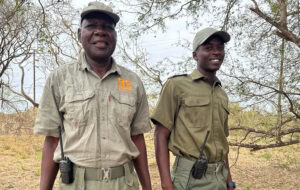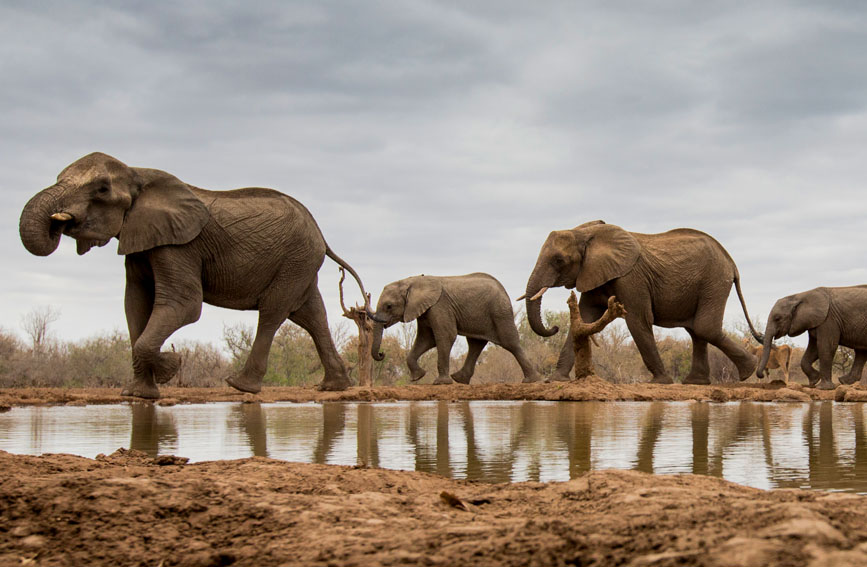Indigenous Leadership in Action
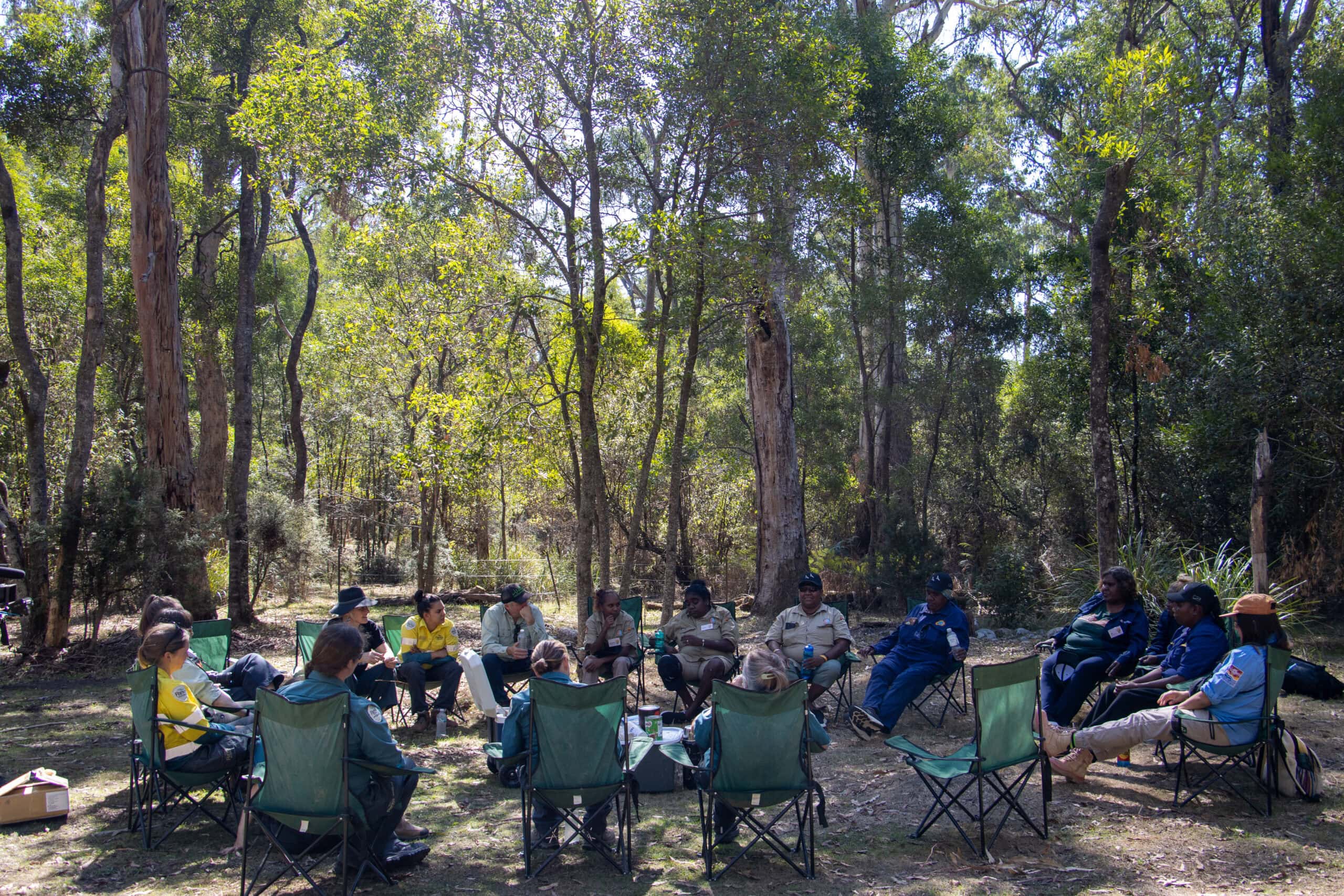
In March this year, our team was honoured to facilitate the Desert Women Rangers Leadership Trip program for the third year running.
Ranger work remains a male-dominated field, yet the knowledge and skills of Indigenous women is critical to keep country healthy. Thin Green Line believes it is vital to support more women rangers into visible roles of leadership and to develop role-models who encourage future generations of women and girls to join the ranks.
So, how exactly do we do that?
Leadership can take many forms, but one important component is confidence – and the best way to develop confidence? Step outside of your comfort zone!
This program supports desert women rangers to travel from their remote communities to Melbourne – a city of 5 million people. Here, the participants face numerous firsts, from travelling on trains or trams, to navigating a bustling city at peak hour or trying new foods (like deep-fried ice-cream!).
Critically, the women also learn to share stories of their work on country and use public speaking as a platform to build confidence. These experiences are vital for rangers aspiring to professional leadership roles that require them to present to boards, funders, or community members.
In Indigenous land management, where traditional knowledge systems and Western practices often intersect—and sometimes compete—communicating across diverse audiences is a critical skill. Indigenous rangers navigate this space regularly, so building the confidence and ability to speak across both worlds is essential. The Desert Women Rangers Leadership Trip offers a safe, supportive space for women to strengthen these capabilities in a complex and often challenging contex.
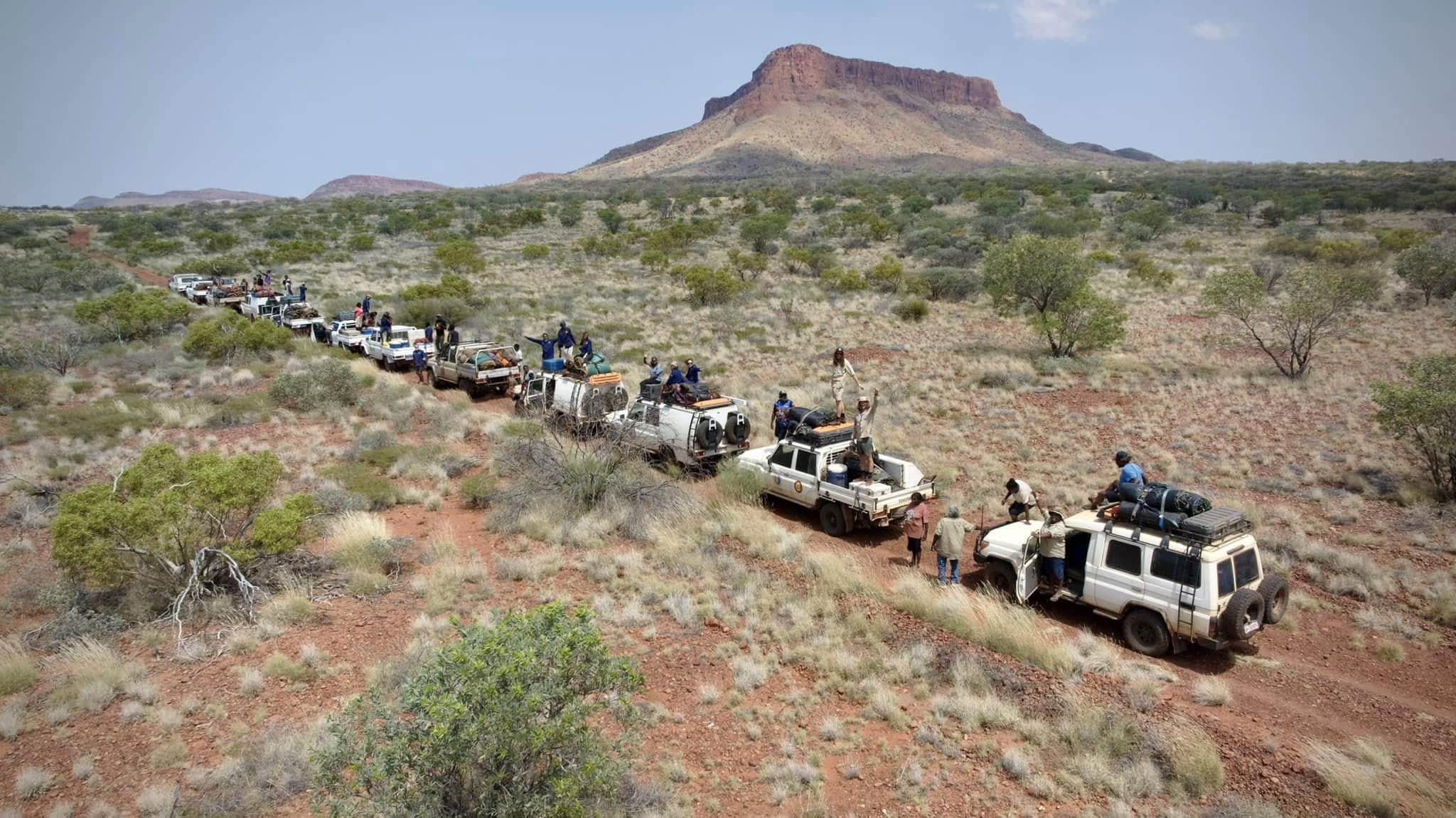
A convoy of ranger vehicles traverse desert Country. Image courtesy of Indigenous Desert Alliance.
Why is the Desert Important?
Australia’s desert regions are among the most ecologically and culturally significant landscapes in the world — spanning more than 3 million square kilometres and home to unique biodiversity and rich cultural heritage. Indigenous Protected Areas (IPAs) form the backbone of conservation efforts across these landscapes, with 81 declared IPAs covering nearly 50% of Australia’s National Reserve System.
Our partners in this project – the Indigenous Desert Alliance – support a network of 65 ranger teams across these remote regions: each playing a vital role in the protection of Country through traditional knowledge systems, cultural burning, invasive species management and biodiversity monitoring. Their efforts align with global climate and biodiversity targets, including the Global Biodiversity Framework’s ‘30×30’ target to protect 30% of the world’s land and waters by 2030. Investing in the leadership of Indigenous women rangers is a critical step towards achieving these goals, while also ensuring that Indigenous knowledge remains at the heart of conservation efforts.
Our Participants
Participating in the 2025 program were nine women, each hailing from vastly different regions of Australia but all sharing a connection to desert Country.
Rangers JM, Miranda, and Verna travelled from Birriliburu Country, deep in central Western Australia. Ranger Jordy, the only woman on her team in the Far West Coast of South Australia, embarked on this trip solo. Lynette, Vallerina, and Leesharni came from Nyangumarta Country, along with rangers Carlene and Rose from neighbouring Karajarri Country.
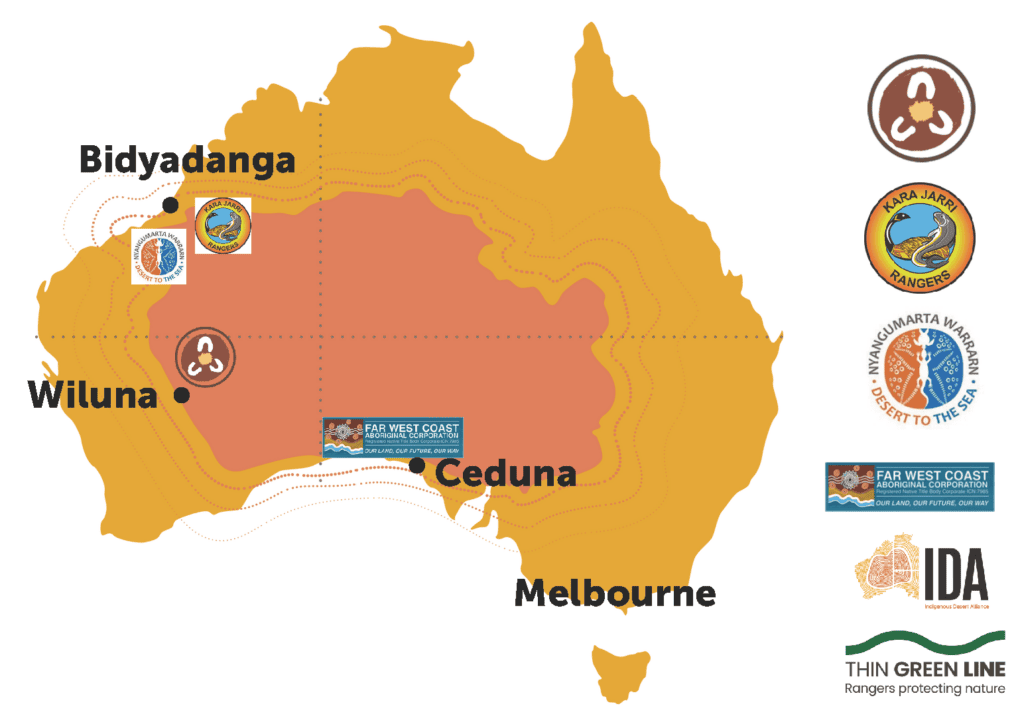
Developing Confidence, One Step at a Time
During their time in Melbourne, the group took on a series of challenges, growing together with each step. The first hurdle was building trust—getting to know one another and learning how to collaborate with people they had only just met. Through a series of workshops the women worked to develop presentations about their work on Country and shape how they wanted to lead. Early on, they created a shared goal to guide their journey: “Encouraging each other and sharing our knowledge to become stronger in women’s leadership.”
After days of hard work—practicing, refining, and encouraging one another—it was time to share their story with a new audience. The group travelled to Alexandra, in Victoria’s High Country, to meet the Taungurung Parks Rangers and the Taungurung Land and Waters Council. Here, standing on Country far from their desert homes, the women delivered their first presentation, shared stories of biodiversity management, and built new connections across Country – putting into practice the leadership they had been working so hard to grow.
From there, the week unfolded with a series of inspiring and sometimes demanding engagements. The group presented to three very different types of audiences: school groups, academic researchers, and corporate teams. Each setting required the group to adapt their style—whether simplifying key messages for younger audiences, engaging with scientific language and questions, or drawing on local knowledge to connect and inspire professional stakeholders. These sessions pushed the women outside their comfort zones, but with every presentation, they grew in confidence, speaking more naturally, offering deeper insights, and building stronger connections with their listeners.
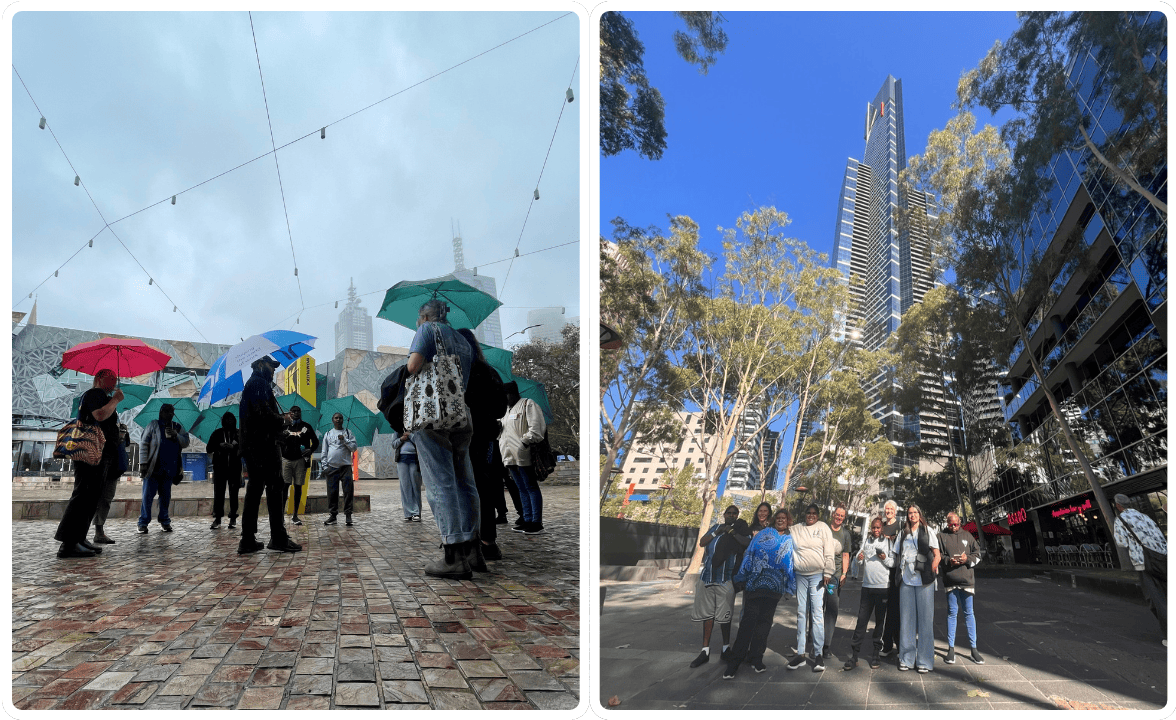
The week ended with a presentation at a formal evening event. While nerves were high, the women delivered their strongest performances yet. The engaged and supportive audience followed with thoughtful questions, and many expressed a deeper appreciation for the work and leadership of desert women rangers.
Final Reflections: Leadership in Every Moment
This program was a spark which showed what’s possible when Indigenous women rangers are seen, supported, and given space to lead in their own ways. Leadership didn’t always look like standing at the front of the room. Sometimes, it looked like a quiet check-in, a brave first share, or the joy of laughter after surviving a day in the city!
By the end of the week, the transformation was undeniable. Participants became presenters. Rangers became hosts and facilitators. These women stepped into their voices and lifted each other up in the process. Across regions, languages, and roles, they built a powerful collective strength.
Lynette was a return participant, taking on a mentorship role in the group. A steady, calm guide who led by example. Carlene brought a similar wisdom—never loud, but always heard. Jordy found a sense of sisterhood in the group, sharing, “I have my own women ranger team now.” Leesharni who started out shy, ended the week boldly commanding the mic. As a collective, their confidence grew with every shared story and opportunity to speak alongside their peers.

For Thin Green Line, the opportunity now is to walk alongside these courageous women, to create return pathways and platforms that continue to nurture their leadership and amplify their impact.
The future of land and sea management is brighter because of these women. Not just because of their skills, but because of their courage, care, and commitment—to Country, to each other, and to the generations coming behind them.
This project would not be possible without our partners – The Indigenous Desert Alliance; our supporters – Australian Unity Foundation, One Tomorrow Fund, Partnerships for Protection and Telstra Foundation; and those who hosted our group – Taungurung Parks Rangers, Mornington Secondary College, APT Travel Group and CSIRO Aspendale.
